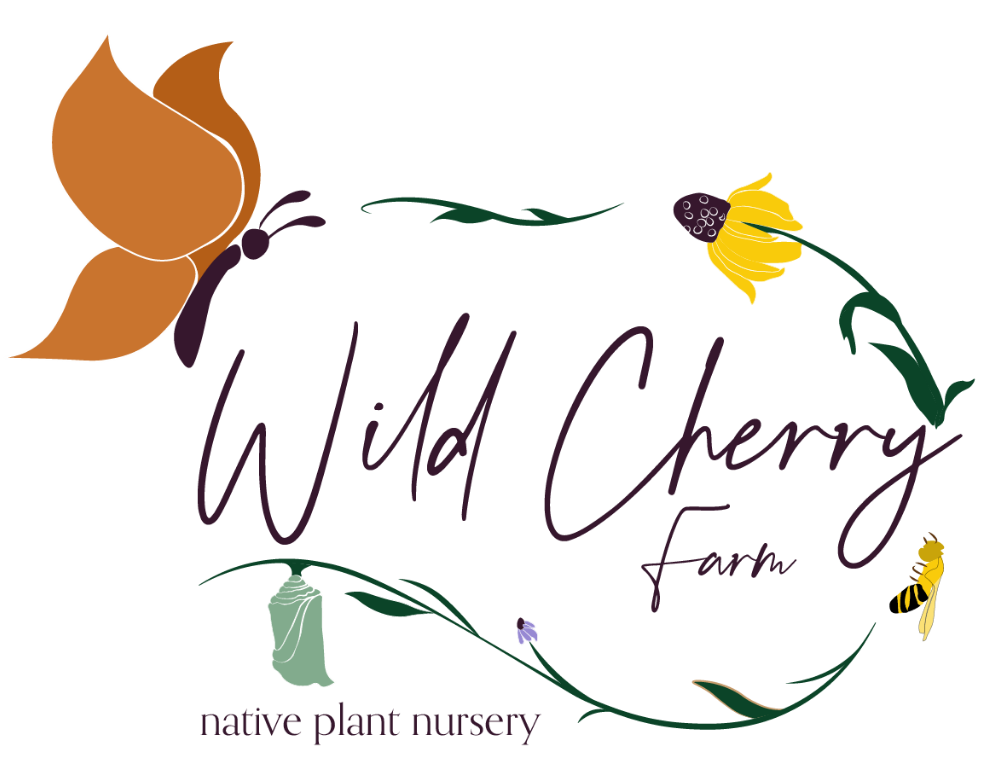Groundnut (Apios americana)
Groundnut flowers are visited by many of our native bees for nectar and to a lesser extent, pollen. It is also the host plant to the Silver-spotted Skipper and Southern Cloudywing (illinoiswildflower.info). This herbaceous vine has fascinating and unusual flowers and both the seeds and tubers are edible to humans (don’t eat anything unless you know exactly what it is). Compared to other commonly eaten tubers and root vegetables, the tubers of Groundnut are unusually high in protein (illinoiswildflower.info). This vine can provide excellent protective cover for many mammals and birds. Groundnut also fixes nitrogen in the soil.
A couple of things to keep in mind, this plant can be vigorous in the right place, so choose your spot wisely, it may not be suited for a small garden. Next, this vine may fail to bloom during some years, and sometimes when it does bloom the flowers often fail to produce seedpods. However, it can be easily propagated by digging up the tubers. Deer may munch on the foliage of this vine.
Photo credit: Peganum
Groundnut flowers are visited by many of our native bees for nectar and to a lesser extent, pollen. It is also the host plant to the Silver-spotted Skipper and Southern Cloudywing (illinoiswildflower.info). This herbaceous vine has fascinating and unusual flowers and both the seeds and tubers are edible to humans (don’t eat anything unless you know exactly what it is). Compared to other commonly eaten tubers and root vegetables, the tubers of Groundnut are unusually high in protein (illinoiswildflower.info). This vine can provide excellent protective cover for many mammals and birds. Groundnut also fixes nitrogen in the soil.
A couple of things to keep in mind, this plant can be vigorous in the right place, so choose your spot wisely, it may not be suited for a small garden. Next, this vine may fail to bloom during some years, and sometimes when it does bloom the flowers often fail to produce seedpods. However, it can be easily propagated by digging up the tubers. Deer may munch on the foliage of this vine.
Photo credit: Peganum
Groundnut flowers are visited by many of our native bees for nectar and to a lesser extent, pollen. It is also the host plant to the Silver-spotted Skipper and Southern Cloudywing (illinoiswildflower.info). This herbaceous vine has fascinating and unusual flowers and both the seeds and tubers are edible to humans (don’t eat anything unless you know exactly what it is). Compared to other commonly eaten tubers and root vegetables, the tubers of Groundnut are unusually high in protein (illinoiswildflower.info). This vine can provide excellent protective cover for many mammals and birds. Groundnut also fixes nitrogen in the soil.
A couple of things to keep in mind, this plant can be vigorous in the right place, so choose your spot wisely, it may not be suited for a small garden. Next, this vine may fail to bloom during some years, and sometimes when it does bloom the flowers often fail to produce seedpods. However, it can be easily propagated by digging up the tubers. Deer may munch on the foliage of this vine.
Photo credit: Peganum
Life Cycle: Perennial
Sun Exposure: Full-Light shade
Soil Moisture: Medium/wet-Medium
Height: 8-15 feet
Plant Spacing:
Bloom Time: Mid-Summer-Early Autumn
Bloom Color: Maroon
Advantages: Pollinator Favorite, Edible
Host Plant: Silver-spotted Skipper and Southern Cloudywing (illinoiswildflower.info)



